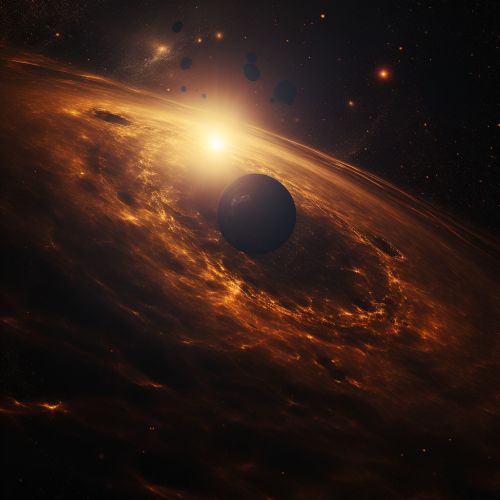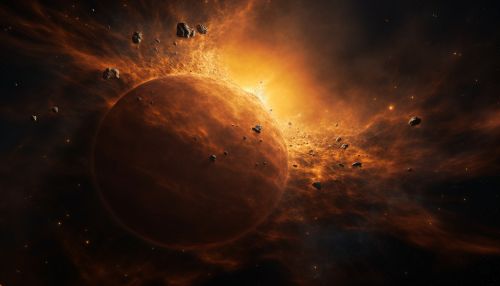The Dynamics of Planetary Formation and Protoplanetary Disks
Introduction
Planetary formation is a complex process that involves the accumulation and aggregation of cosmic dust and gas within a protoplanetary disk to form a planet. This process is governed by a variety of physical and chemical processes that occur over millions of years. The study of planetary formation and protoplanetary disks is a key area of research in astrophysics and planetary science, providing insights into the origins of our own Solar System and the countless others that exist in the universe.
Protoplanetary Disks


Protoplanetary disks are flat, rotating disks of gas and dust that surround newly formed stars. These disks are the birthplaces of planets and other celestial bodies. They are formed from the remnants of the molecular cloud that collapsed to form the star. The material within the disk is primarily composed of hydrogen and helium gas, with a smaller proportion of heavier elements and compounds, including water, methane, and silicates.
Structure and Composition
The structure of a protoplanetary disk is characterized by a thin, dense midplane that gradually thins out towards the upper and lower surfaces. The disk's composition is primarily gas, with dust making up only about 1% of the total mass. However, it is this dust that plays a crucial role in the process of planet formation.
The dust within the disk is not uniform. Instead, it is composed of a variety of different materials, including silicates, carbonaceous materials, and ices. These materials can stick together to form larger aggregates, a process known as accretion.
Dynamics
The dynamics of a protoplanetary disk are governed by a variety of physical processes, including gravity, pressure gradients, and magnetic fields. These forces work together to shape the disk and drive the movement of material within it.
One of the key dynamics at play in a protoplanetary disk is the process of angular momentum transfer. This process is responsible for the movement of material from the inner regions of the disk to the outer regions, a process that is crucial for the growth and evolution of the disk.
Planetary Formation
Planetary formation is a complex process that occurs within protoplanetary disks. It involves the growth of dust grains into larger aggregates, the formation of planetesimals, and the eventual accumulation of these bodies into planets.
Dust Growth and Aggregation
The first stage in the process of planetary formation is the growth of dust grains within the protoplanetary disk. This process begins with the sticking together of individual dust grains, a process known as coagulation. As these aggregates grow, they can begin to attract additional material through gravity, leading to the formation of larger bodies known as planetesimals.
Planetesimal Formation
Planetesimals are the building blocks of planets. They are formed from the aggregation of dust and gas within the protoplanetary disk. The process of planetesimal formation is not fully understood, but it is believed to involve a combination of coagulation and gravitational instability.
Once planetesimals have formed, they can continue to grow through the process of accretion. This involves the gravitational attraction of additional material from the surrounding disk. As a planetesimal grows, it can begin to clear a gap in the disk, a process known as planetary migration.
Planet Formation
The final stage in the process of planetary formation is the accumulation of planetesimals into a planet. This process can take millions of years and is governed by a variety of factors, including the mass and composition of the planetesimal population, the dynamics of the protoplanetary disk, and the presence of gas within the disk.
Planets can continue to evolve and change after their formation, through processes such as atmospheric loss, impacts, and internal heating.
Conclusion
The study of planetary formation and protoplanetary disks is a complex and fascinating field, providing insights into the origins of our own Solar System and the countless others that exist in the universe. Despite the challenges, our understanding of these processes continues to grow, driven by advances in observational technology and theoretical modeling.
